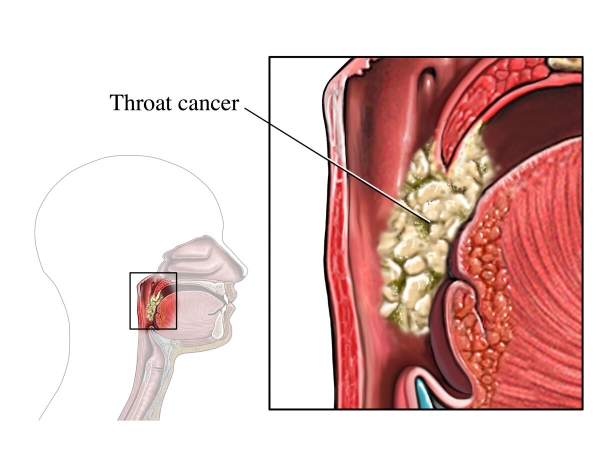Head and Neck Cancer Facts
What Are Head And Neck Cancers?

Head and neck cancers are a group of diseases involving abnormal, uncontrolled cell growth in head and neck tissues. These include:
- Oral cavity: including the lips, gums, cheek lining, hard palate, front two-thirds of the tongue and floor of mouth underneath the tongue
- Pharynx: the tube that starts from behind the nose and ending at the esophagus; it may classified further based on location — including the nasopharynx (the upper part behind the nose), oropharynx (the middle part, including the soft palate, base of tongue and tonsils) and hypopharynx (the lower part leading into the esophagus).
- Larynx: Also known as the voicebox, the larynx is a tube that connects the base of the pharynx to the bronchus and lungs. It contains the vocal cords, which control air output for speaking, and epiglottis, which prevents food matter from going into the larynx during swallowing.
- Nasal cavity and paranasal sinuses: hollow spaces within and around the nose
- Salivary (parotid) glands: glands near the jawbone that produce saliva
What Risk Factors Are Linked To Head And Neck Cancers?
Factors that can elevate head and neck cancer risk include:
- Alcohol: heavy alcohol use, especially over a long time
- Tobacco: tobacco use, particularly smokeless tobacco (also known as “chewing tobacco” or “snuff”)
- Frequent or regular consumption of paan (betel quid), mate or preserved foods
- Human papillomavirus (HPV) or Epstein-Barr virus infection
- Radiation exposure to the head and neck region
- Occupational/industrial exposures to substances linked with head and neck cancer, including wood and metal dusts, synthetic fibers, asbestos and formaldehyde
- Poor oral health
- Family history of head and neck cancers
- Gender: head and neck cancers are twice as common in men
- Ethnicity: Asians, particularly Chinese, have a higher risk of developing nasopharyngeal cancer
What Are The Symptoms Of Head And Neck Cancers?
Head and neck cancer symptoms vary depending on the area affected, and may include:
- Unusual pain in the mouth, neck or throat, particularly when swallowing
- Lump or swelling in the head or neck area
- Change in head or neck appearance, particularly any differences that develop between the left and right sides
- Difficulty breathing, chewing, swallowing or speaking
- Persistent bleeding through the nose or in the mouth
- Red or white patch on the gums or inner cheek
- Chronic sinus blockages or infections
- Numbness or paralysis with facial muscles
Although these symptoms can be caused by other conditions, you should check with your doctor to get a definitive diagnosis.
Sources: National Cancer Institute and American Cancer Society